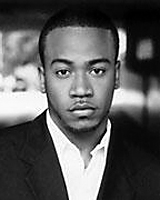Interview: Columbus Short
Posted on December 2, 2009 at 9:13 pm
NM: You have not made many films but each one has been a real departure from what you’ve done before. Is that important to you?
CS: It is. The point of acting is to hide yourself and get lost in character. To play the same character in eighteen movies would be defeating the purpose I believe so I try to keep a little bit of diversity.
NM: Is this your first full-on action movie?
CS: This is the first I hope of many. It was fun to do but it wasn’t about the action. I don’t want to do action that doesn’t mean anything. Everything I do I want to have character development and three-dimensional characters, fallible humans, and this is definitely one of them.
NM: Have you worked with weapons before?
CS: I have! But in this movie my character doesn’t use weapons at all. He’s like McGuyver. I use my brain, no iron.
NM: Do you remember when you first decided that this was want you wanted to do?
CS: I don’t know if it was a defining moment. I knew it as soon as I could comprehend the possibility of having a career. I knew very young I wanted to be a movie star. As much as I grew into love of the craft. As soon as I could speak I was auditioning and going to classes every day. It was my life.
NM: Did you work with the costume designer to create this role?
CS: Every movie I work with the costume designer to see what feels like the character, not what Columbus would wear but what is right for the character. Outside of the armored truck standard issue security guard uniform, this guy is trying to make ends meet. He might have one pair of jeans, the same boot, maybe changes his shirt but he doesn’t have a walk-in closet full of things, so I wanted something comfortable that felt like the character.
NM: Who is the director who has taught you the most?
CS: I take bits and pieces from every director. I’d say Sylvain and Nimrod . They were more about teaching me lens sizes and depth of field and how to move the camera and lighting. I do want to direct and I didn’t go to film school, so having a director that are very much hands on that way and looking to let me learn, that is a key factor.
NM: Are there actors who inspire you?
CS: Absolutely. I just saw “Inglourious Basterds” and that actor Christoph Waltz, he was phenomenal, Daniel Day-Lewis, the work that these guys do is amazing. But I try to carve my own way so the actors who come after me will say, “I want to do it like Columbus did it.”
NM: Are you the kind of actor who writes out pages and pages of background for the character?
CS: Not at all. I’m the complete antithesis of that guy. I want it to be as organic as possible, as least thought out as possible. I want to be there on the day and be present and listen and respond in a true way as the character. “Cadillac Records” was the most work that I did. Not just the physical aspect but learning the dialect and delving into the blues and learning how to play harmonica — those were all tools I wanted to have in the bag that I could pull from at any point as the character. But as far as pre-thinking out — you never know what is going to happen with that other actor in front of you. I just want to be a vessel to receive whatever is happening.
NM: So do you deliberately try a range of ideas in different takes?
CS: Absolutely! You stay with the foundation and then you just try different things because you don’t know how the director will cut it and you want to give him, what will work, and you want to give him some options, give yourself some options, discover some things when you start to play. That’s what we do; we get paid to play.
NM: I heard you get paid to wait; you act for free.
CS: That’s exactly true. Tom Hanks said that. You get paid to wait. But the job is to have fun, to play.
NM: Do you develop your own projects?
CS: As we speak, that is what we are doing. Projects that come to you are not written for you. We have to take a lesson from Will Smith, who develops projects he can shine in. We’re trying to develop things from the ground up.
NM: Do you have a dream project?
CS: I want to play Martin Luther King. I want to tell the real story, his demons, his struggles as a man, not just as a hero but fallible, I want to show that side.
NM: What makes you laugh?
I’m a silly guy, I love wit and cynicism and sarcasm.
NM: You are such a gifted musical performer. Do you think dancers and singers are naturally good actors?
CS: No, absolutely not true. What dancing has helped me with is blocking; it makes me comfortable with my body. You know how to hit your mark, you know how to embody a swagger. But sitting down and looking across the table at another actor and being able to go to battle on screen is nothing to do with singing or dancing.
NM: What inspires you?
CS: First of all, God inspires me, where he’s brought me, it blows my mind. To know that He brought me this far, it could not have been an accident, to go forward, I’m excited to leap into the void, I’m excited about tomorrow, the unknown, excited to see what else He has for me.

